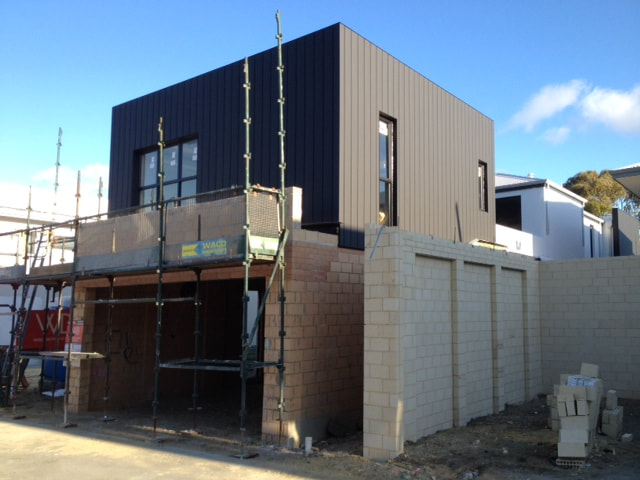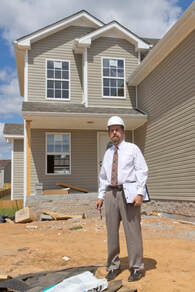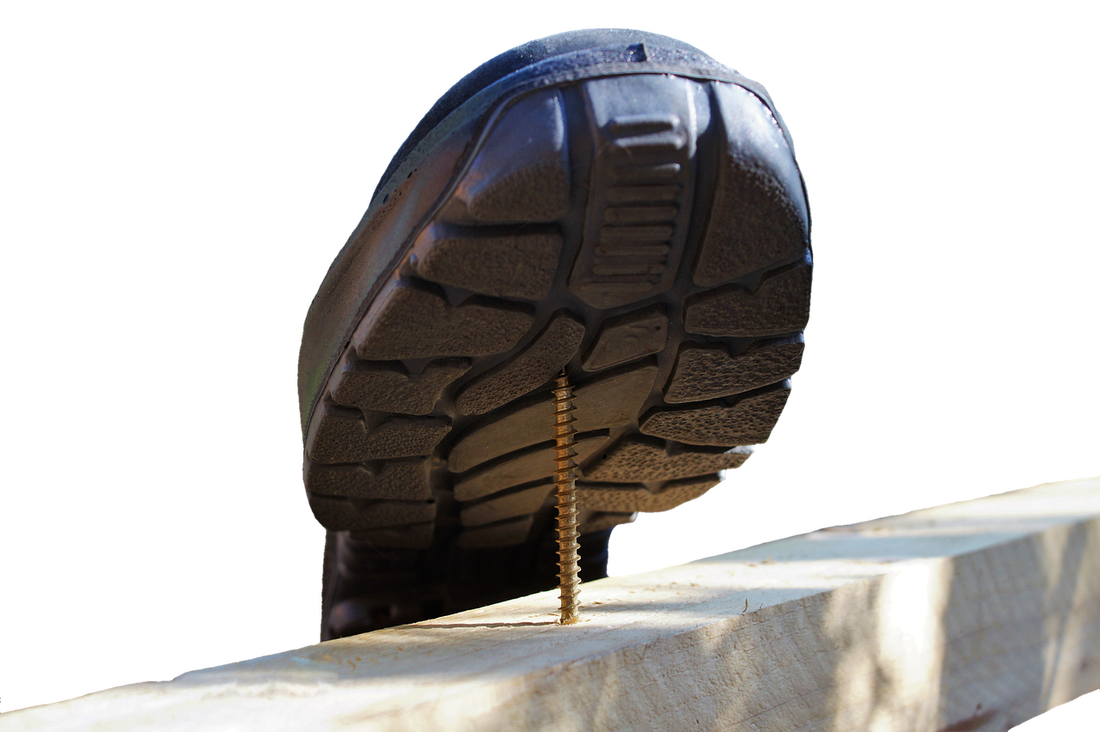|
It is devastating when you find defects in your newly built home. After all you have paid lots to have the home of your dreams, and you have invested emotions and efforts into having your new home constructed. Lots of planning and excitement - then disappointment. Some defects are easily fixed, while some issues remain a constant problem, especially when water is involved. Fixing building defects can be disruptive and costly. In our first article in this 3 part series Quality checks for your home building and renovation project we discussed the costs of poor quality - and they are more than just monetary! We also talked about why you should not leave quality only up to your builder and some things to check and how to prepare for your project visit. In the second part When inspecting your new home build and renovation project you should check we looked at some of the things you must check and look out for during construction. In this final part we conclude with more things to look for while your home is being constructed or renovated. As they say Buyer Be Warned. I say Buyer Be Educated. More things to lookout for when visiting your home while it is being constructed or renovated:
Take lots of photographs, especially to record items that you think might be a quality issue. Care should be taken that you don’t ask for something additional to the specifications, or make changes to the design without considering the additional costs and time which could impact your budget and delay the job. When entering the project site you should notify the contractor and get their permission (you may have to sign a visitors’ register), wear appropriate safety clothing as required by the contractor (in any case never visit the project wearing sandals or shoes which aren’t fully enclosed), obey all safety instructions and stay away from work areas, preferably be accompanied by the contractor’s representative, and not interfere with operations or give the contractor’s personnel or subcontractors instructions (unless there’s an immediate safety risk) or yell at anyone (no matter how unhappy you may be with the quality or progress). It’s good practice to arrange a site walk around once a week with the contractor. It should be noted that the contractor should never restrict you from visiting the project.
Want to learn more about designing, renovating and building houses?Paul Netscher has written 2 easy to read books 'An Introduction to Building and Renovating Houses - Volumes 1 and 2'. An Introduction to Building and Renovating Houses Volume 1 deals with Hiring Contractors, Managing Construction and Finishing Your Home. and Designing your ideal home Volume 2 deals with Finding Your Ideal Property and Designing Your Dream Home.
("Great for those that DIY. Very helpful in home renovations!" said a Reader on Amazon.com 5*****) These books are available from Amazon and other online bookstores in paper and ebook.
2 Comments
Finding construction defects in your new home during constructionIn our last article Quality checks for your home building and renovation projectwe discussed the costs of poor quality - and they were more than just monetary! We also talked about why you should not leave quality only up to your builder and some things to check and how to prepare for your project visit. Looking for quality issues in your new home build or renovationAs discussed in the previous article you should regularly visit your home as construction progresses. It's hard to find quality problems when the house is finished and potential construction defects and problems have been covered over. It's also difficult to fix some issues without damaging something else if defects are only detected after the house is complete. Every time you visit the project site check:
 This is an extract from the author's book 'An Introduction to Building and Renovating Houses: Volume 1 Hiring Contractors, Managing Construction and Finishing Your Home'. Want to learn more about designing, renovating and building houses?Paul Netscher has written 2 easy to read books 'An Introduction to Building and Renovating Houses - Volumes 1 and 2'. An Introduction to Building and Renovating Houses Volume 1 deals with Hiring Contractors, Managing Construction and Finishing Your Home. and Designing your ideal home Volume 2 deals with Finding Your Ideal Property and Designing Your Dream Home.
("Great for those that DIY. Very helpful in home renovations!" said a Reader on Amazon.com 5*****) These books are available from Amazon and other online bookstores in paper and ebook. Many new homes are constructed badlyThere are many media reports of poor construction Read and Read and also Read as some examples. Poor quality work can be costly to you because:
Quality is about delivering a house that meets and exceeds the standards and specifications in the contract, meeting the local bylaws and codes and meeting the code and specification requirements of the state or country. These requirements extend to the house’s functionality, durability and the finished aesthetics. Do not rely on your building contractor to deliver good qualityIt’s important to monitor quality during construction. While these aren’t necessarily formal checks, and you may not consider yourself an expert, it pays to pick up potential problems early in the construction process. Contractors do make mistakes, or on occasion deliberately take a chance. Being there early to pick up the problem is important. Always notify the contractor in writing of quality concerns you see so there’s a record of your concerns. Remember to be consistent. Don’t accept an item as being okay one day, then complain about it the next. Don’t wait until the end of the project to raise quality issues, by then it’s often difficult to fix some problems, and in fixing them other items may be damaged. If the contractor is aware that you’re scrutinising the quality of their work as construction progresses they’re more likely to take additional care to ensure that they produce good quality work. Familiarise yourself with the drawings, especially the details. Even take the drawings with you when you walk around the project so that you can check when things don’t appear to be in the right place. If you have little construction experience then ask somebody who is more familiar with house construction to join you. Better still, employ a clerk of works to regularly visit the project to check the quality on your behalf. If you’ve employed a clerk of works you must introduce them to your contractor so that your contractor knows who they are. It may seem silly, but it’s imperative to check that your house is being constructed on the correct property, that it’s within the property boundaries (including allowing for setbacks and building lines) and that it’s orientated the correct way. In the next 2 articles When inspecting your new home build and renovation project you should check and Checking the quality of construction in your new home Part 3 we discuss what to look for when you visit your new home being constructed, or check on your home renovations.  This is an extract from the author's book 'An Introduction to Building and Renovating Houses: Volume 1 Hiring Contractors, Managing Construction and Finishing Your Home'. Want to learn more about designing, renovating and building houses? Click on this picture to read more on Amazon Click on this picture to read more on Amazon Paul Netscher has written 2 easy to read books 'An Introduction to Building and Renovating Houses - Volumes 1 and 2'. An Introduction to Building and Renovating Houses Volume 1 deals with Hiring Contractors, Managing Construction and Finishing Your Home. and Designing your ideal home Volume 2 deals with Finding Your Ideal Property and Designing Your Dream Home. ("Great for those that DIY. Very helpful in home renovations!" said a Reader on Amazon.com 5*****) These books are available from Amazon and other online bookstores in paper and ebook. Home renovation takes a lot of time, effort, and often needs a big budget. There are a lot of advantages to having a professional take care of your home renovation, but that’s an added cost that just means you have less money for the actual renovation. The good news is that you can save money and challenge yourself by taking charge of your renovation project yourself. As long as you plan it properly and are willing to put in the extra effort, you can get a lot more done and, of course, there’s a charm to living in a space that you’ve built with your own hands! Here are 7 tips that will help you avoid the pitfalls of renovating your own house:
Author Bio: When people find their homes and offices infested with pests, it is not uncommon for them to panic. Raymond Web has taken the task to educate people on pest prevention and control strategies, helping them keep their surroundings healthy, safe and pest-free. As the digital marketing manager for Take Care Termite and Pest Control, in Tracy, CA, he has an in-depth understanding of people and their pain points due to pests, which he efficiently uses in his content to educate people and add value to their lives. Want to learn more about designing, renovating and building houses?Paul Netscher has written 2 easy to read books 'An Introduction to Building and Renovating Houses - Volumes 1 and 2'. An Introduction to Building and Renovating Houses Volume 1 deals with Hiring Contractors, Managing Construction and Finishing Your Home. and Designing your ideal home Volume 2 deals with Finding Your Ideal Property and Designing Your Dream Home.
("Great for those that DIY. Very helpful in home renovations!" said a Reader on Amazon.com 5*****) These books are available from Amazon and other online bookstores in paper and ebook. In our 2 previous articles Do not hurt yourself while renovating or building your home. Safety tips. and Safety tips when renovating or building a house - part 2 we discussed many tips to ensure that you do not hurt yourself or anyone else while renovating or building your home. In this final instalment we consider more tips to working safely. More safety tips:
Accidents happen quickly, and often when you least expect them. Injuries can be devastating and can change your life in an instant. Don’t take chances to save a few thousand dollars, the end result could cost lots more. Plan all work carefully, taking account of the possible risks. Want to learn more about designing, renovating and building houses?This article is adapted from Paul Netscher's book 'An Introduction to Building and Renovating Houses; Vol 1'
Paul Netscher has written 2 easy to read books 'An Introduction to Building and Renovating Houses - Volumes 1 and 2'. An Introduction to Building and Renovating Houses Volume 1 deals with Hiring Contractors, Managing Construction and Finishing Your Home. and Designing your ideal home Volume 2 deals with Finding Your Ideal Property and Designing Your Dream Home. ("Great for those that DIY. Very helpful in home renovations!" said a Reader on Amazon.com 5*****) These books are available from Amazon and other online bookstores in paper and ebook. © 2020 This article is not to be reproduced for commercial purposes without written permission from the author. |
AuthorI’m a construction professional, author of several successful construction management books, and a home owner. I’ve made mistakes in construction management, I’ve seen others make mistakes, but importantly I’ve had multiple successful construction projects and I’ve learned from the mistakes. I want to share these lessons and my knowledge with you. Also available from:
Amazon Au, Amazon DE, Amazon ES, Amazon CA, Amazon IT, Amazon FR, Amazon NL, Amazon India and 'An Introduction to Building Houses - Volume 2 Finding Your Ideal Property and Designing Your Dream Home'
Archives
July 2024
CategoriesWe welcome genuine comments, especially comments that add additional information to the subject matter in the article. We however reserve the right to remove inappropriate comments, which includes comments that have nothing to do with the subject, comments that include inappropriate language, and comments that are an advertisement for a product or company, or which include an advertising link. Comments must be in English. We will not enter into discussion on why a particular comment was removed.
|















 RSS Feed
RSS Feed


